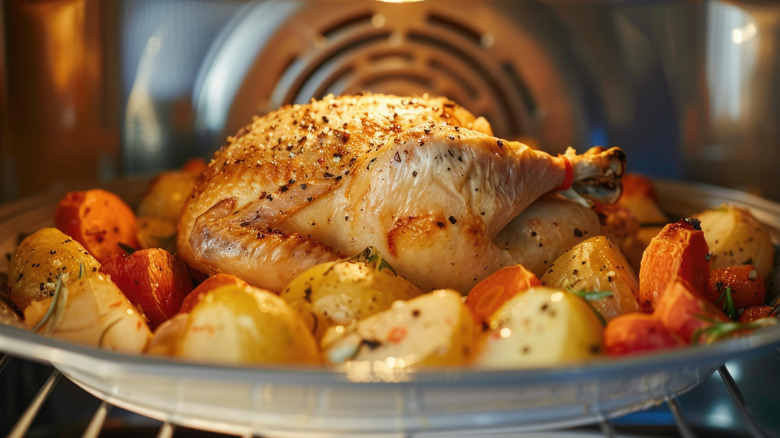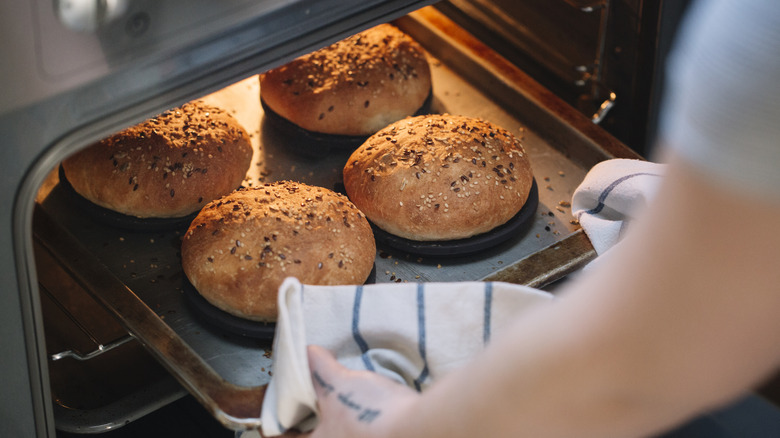The Key Temperature Difference Between Baking And Roasting
The words "roasted" and "baked" conjure up images of wildly different dishes even though the two cooking methods are sometimes difficult to tell apart. A piece of chicken can go into the oven and come out either baked or roasted. So, what's the difference? You'll expect a succulent and juicy piece of meat if it's the former. If it's roasted, it will likely have a crackling, slightly charred skin, and tender meat underneath. There is also a widespread belief that sweet treats are generally baked while savory dishes are more often roasted. However, both cooking methods have an extensive roster of sweet and savory dishes, though you likely don't always want to see them switched on a dish (roasted cake, anyone?).
There are several factors through which roasting and baking result in such different outcomes. Of course, the temperature plays a crucial role, but it's also important to consider how that cooking heat is applied. While both methods use heat and low moisture conditions to cook food, baking usually occurs at lower temperatures but requires more even heating. Roasting, on the other hand, takes place at higher temperatures and doesn't require as much of a confined space, which is why you can also roast something on a fire. So, if you want a baked potato when you're out camping, you'd cover it in aluminum foil for enclosed, even heating. However, we say you ought to skip the foil when baking potatoes, because they may well taste better when roasted. Like it is with the piece of chicken, you'll get two very different spuds depending on whether they're baked or roasted.
Roasting occurs at higher temperatures, but other factors are at play
Baking often requires significant prep because this process transforms the ingredients into a dramatically different dish; gooey batter transforms into a cake, for instance. It also requires more careful measurements and assembling. For example, something as subtle as butter temperature can dramatically affect the final baked dish.
Alternatively, roasting doesn't change the state or consistency of the ingredients as much as baking does. Instead, roasting does more to dehydrate the food, helping concentrate flavors while also adding a slightly charred or crispy surface. Prep for roasting is also generally easier, as usually a thin coating of fat is all that's required. While baking will most often occur in a dish and usually contain some liquid or semi-liquid components, roasted foods are generally solid like vegetables and pieces of meat.
Due to these differences, roasting requires temperatures of 400 degrees Fahrenheit and above while baking is at slightly lower temperatures of up to 375 degrees Fahrenheit. The latter also requires an insulated environment for continuous and even heating. Timing plays a crucial role and works in tandem with the temperature. Sometimes the cooking needs to be low and slow, while at other times it's quite the opposite, as is the case with a Neapolitan pizza that's baked at well over 500 degrees Fahrenheit for just a few minutes. As such, there are many instances of overlap between roasting and baking, and you can often use tricks from either of the cooking methods to enhance the other. Consider deploying certain baking ingredients to help make roasted vegetables extra crispy.

